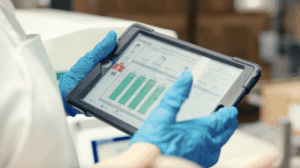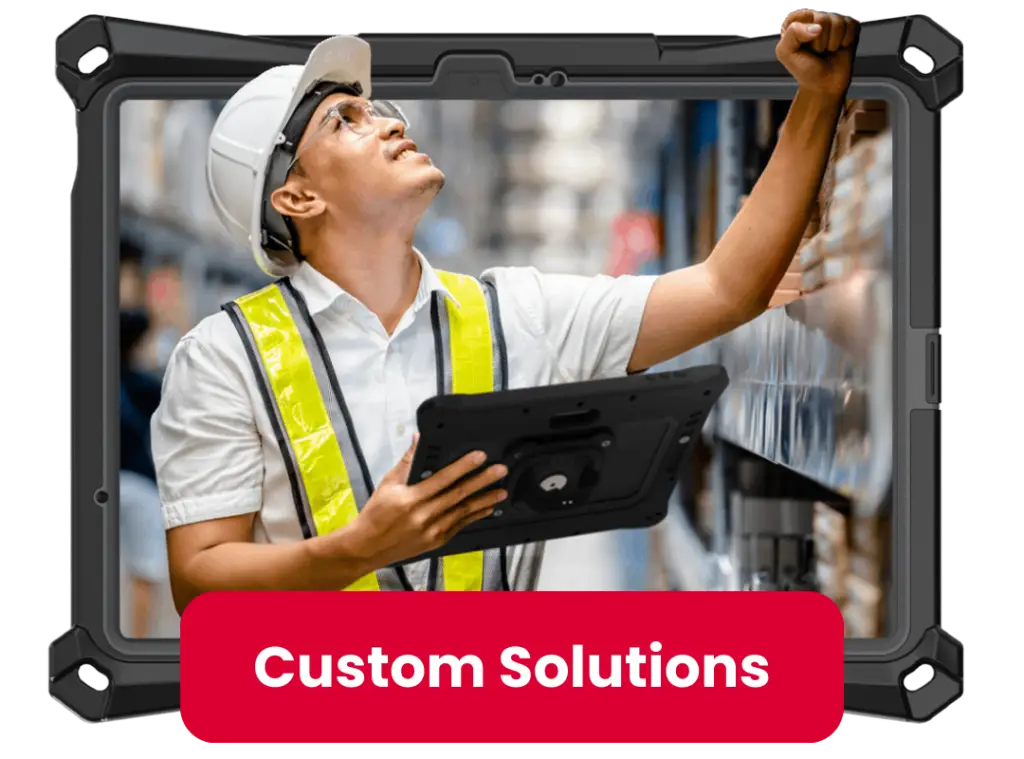The Hidden OEE Killer: How Fragile Tablets Sabotage Your Factory’s Performance
As a plant manager, your focus is on maximizing Overall Equipment Effectiveness (OEE, the gold standard for measuring manufacturing productivity. You invest heavily in maintaining the Availability, Performance, and Quality of your production machinery. But what about the technology your operators use to interact with those machines?
A consumer-grade tablet that fails due to a drop, liquid spill, or constant vibration isn’t just an IT headache—it’s a direct hit to your OEE score. This guide breaks down how a strategic investment in rugged mobility solutions directly improves each component of OEE, turning a hidden liability into a competitive advantage.
🔍 Why This Matters
- Tablets are now mission-critical: They power MES dashboards, digital work instructions, and real-time quality checks.
- Consumer devices aren’t built for the floor: Drops, dust, vibration, and liquid exposure cause frequent failures.
- Every failure = lost productivity: When a tablet goes offline, so does the operator, and your OEE score.
📉 1. Availability: The Downtime You’re Not Tracking
Availability measures unplanned stops. While machine breakdowns are obvious, operator downtime from tablet failure is often overlooked.
Common Failure Points:
- Drops from forklifts or workstations
- Dust and coolant ingress
- Overheating or vibration-induced reboots
The Fix:
Deploy rugged tablets with:
- MIL-STD-810H drop protection
- IP54/IP68 sealing
- Sealed ports and reinforced frames
✅ Result: Operators stay online and productive, reducing unplanned downtime and boosting Availability.
⚙️ 2. Performance: Eliminating Wasted Motion
Performance drops when production runs below optimal speed. One hidden cause? Operators walking away from machines to access terminals.
The Problem:
- Manual data entry at distant stations
- Delays from laggy or inaccessible tablets
The Fix:
Mount rugged tablets at the point of use using MagConnect® or VESA mounts. This turns tablets into mobile workstations—accessible, stable, and always ready.
✅ Result: Operators input data instantly, eliminating “minor stops” and keeping throughput high.
🧪 3. Quality: Protecting First-Pass Yield
Quality suffers when bad data leads to bad parts. A cracked screen or glitchy tablet can cause:
- Missed quality checks
- Inaccurate SPC data
- Delayed defect detection
The Fix:
Use rugged tablets that:
- Maintain performance under vibration
- Ensure reliable touchscreen input
- Integrate with QA systems in real time
✅ Result: Better data = fewer defects = higher first-pass yield.
💡 Best Practices for Rugged Tablet Deployment
| Step | Action |
|---|---|
| ✅ Audit Your Environment | Identify zones with vibration, splash, or drop risks |
| ✅ Specify Rugged Standards | Require MIL-STD-810G and IP54/IP68 in RFPs |
| ✅ Pilot in Harshest Zone | Test rugged solutions where failure is most likely |
| ✅ Mount > Carry | Use articulating arms to reduce drops and fatigue |
| ✅ Track Uptime | Log device performance to justify full rollout |
📈 Rugged Mobility = OEE Gains
Rugged tablets aren’t just durable—they’re strategic. By protecting your frontline tech, you protect your productivity.
The aXtion® Pro MP and aXtion® Bold MP series are purpose-built for industrial use, with features that directly support OEE improvement.
Learn More
-
How to Measure Overall Equipment Effectiveness (OEE) – AIIEM: A clear breakdown of OEE’s three components, Availability, Performance, and Quality and how to use them to evaluate and improve manufacturing efficiency
-
Performance Measurement Using OEE: Literature Review & Practical Application – International Journal of Production Research: A deep dive into the evolution of OEE, its practical challenges, and how it can be customized for different manufacturing environments .
-
ISPE Good Practice Guide: Equipment Reliability – ISPE.org: A guide on improving equipment reliability across the lifecycle, with a focus on reducing performance variation and unplanned downtime








